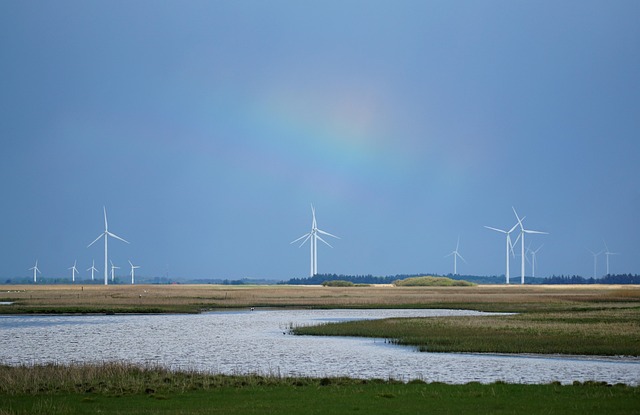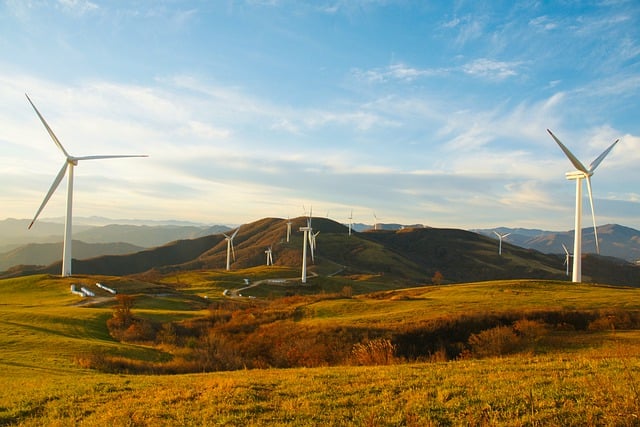Harnessing Nature: The Future of Sustainable Energy
The quest for sustainable energy has become one of the most crucial endeavors of the 21st century. As the world grapples with the impacts of climate change, dwindling fossil fuel reserves, and rapid urbanization, innovative solutions that harness natural resources are at the forefront of discussions on energy production. Sustainable energy refers to the ability to meet current energy needs without compromising the ability of future generations to meet theirs. Harnessing nature for energy not only provides an opportunity for economic growth but also ensures environmental preservation. This article explores various avenues through which we can harness nature to secure a sustainable energy future.
The Fundamentals of Sustainable Energy
To understand the future of sustainable energy, it is essential to grasp its core principles. Sustainable energy encompasses various renewable resources, including solar, wind, hydroelectric, geothermal, and biomass. These energy forms are characterized by their ability to regenerate naturally and can be utilized without significant harm to the environment. Unlike fossil fuels, which release harmful carbon emissions into the atmosphere, these renewable sources contribute to a cleaner, healthier planet.
The transition to sustainable energy requires a multi-faceted approach that encompasses technological innovation, policy reforms, and community engagement. By synergizing these components, it is possible to establish a robust infrastructure that facilitates the widespread adoption of renewable energy. The future of sustainable energy lies in its ability to blend seamlessly into everyday life, providing reliable power while promoting environmental stewardship.
Solar Energy: Capturing the Sun’s Power
Solar energy stands at the forefront of renewable energy technologies. The sun provides an inexhaustible source of energy, capable of generating more power in one hour than humanity uses in an entire year. Solar panels, which convert sunlight into electricity, have become increasingly efficient and affordable, making them accessible to a broader audience. Innovations in photovoltaic cells, such as bifacial panels and solar rooftops, enhance energy capture and enable applications in diverse settings, from residential homes to large-scale solar farms.
As technology advances, the concept of solar energy storage has gained traction. Battery systems like lithium-ion batteries play a vital role in storing solar power for use during non-sunny periods. Moreover, innovative solutions such as solar windows and solar paint are in the research phase, promising to integrate solar technology into everyday infrastructure. With effective policies and financial incentives, solar energy can continue to proliferate as a cornerstone of sustainable energy.
Wind Energy: Harnessing the Power of Air
Wind energy is another powerful player in the quest for sustainable energy. Wind turbines convert kinetic energy from wind into electricity, providing a clean energy source with minimal environmental impact. Offshore and onshore wind farms have seen exponential growth over the past decade, driven by advancements in turbine technology, which enable greater efficiency and reduced costs.
The localization of wind energy relies heavily on geographic and meteorological factors. Regions with consistent and strong winds, such as coastal and open plains, are ideal candidates for wind development. This adaptability makes wind energy a viable option for many countries. However, the integration of wind energy into existing power grids presents challenges, primarily due to the variability of wind. Developing robust energy storage methods and smart grid technology can address these issues, making wind energy a more reliable component of the global energy mix.
Hydropower: Tapping into Water Resources
Hydropower has long been a significant contributor to global energy supply, accounting for approximately 16% of worldwide electricity generation. By harnessing the energy of flowing water, hydroelectric power plants convert mechanical energy into electrical energy with high efficiency. Large-scale dams and small run-of-the-river systems offer varied solutions tailored to specific geographic needs.
While hydropower has environmental advantages, including low greenhouse gas emissions and providing water for irrigation, there are also challenges to consider. The construction of large dams can disrupt ecosystems, alter river flows, and displace communities. To address these concerns, the focus is shifting towards more sustainable hydropower options that minimize environmental impact, such as micro-hydropower systems that can be implemented in remote locations without major environmental changes.
Geothermal Energy: The Earth’s Inner Heat
Geothermal energy, derived from the Earth’s internal heat, is a reliable and consistent energy source. It is primarily tapped through geothermal power plants, which utilize steam or hot water from the Earth’s crust to generate electricity. This form of energy boasts a small land footprint and emits minimal greenhouse gases, presenting it as a sustainable option for energy production.
The potential of geothermal energy is vast; it can be harnessed for direct heating applications as well as electricity generation. Ground-source heat pumps, for instance, are increasingly popular for residential heating and cooling, capitalizing on the earth’s stable temperature just below the surface, irrespective of seasonal variations. Geothermal energy’s scalability makes it an attractive option for both large-scale projects and individual households.
Biomass Energy: Organic Material as Fuel
Biomass energy utilizes organic materials—such as plants, agricultural residues, and even animal waste—as a source of fuel. By converting this organic matter into biofuels or biogas, biomass can be transformed into a renewable energy source. Biomass has the potential to not only provide energy but also contribute to waste management solutions.
One of the significant advantages of biomass is that it can be stored and transported easily compared to some other renewable resources. This flexibility allows biomass energy to be used in various applications, from heating and electricity generation to transportation fuels. However, sustainable biomass production requires careful management to prevent deforestation and ensure that land is not diverted from food production. Achieving a balance between biomass energy production and environmental protection will be essential for its future in the sustainable energy landscape.
The Role of Technology and Innovation
The acceleration of sustainable energy sources is heavily influenced by technology and innovation. Investments in research and development lead to advancements in efficiency, storage, and grid integration, all crucial for scaling up renewable energy solutions. For instance, smart technologies enable real-time monitoring of energy consumption and production levels, facilitating optimized energy distribution and reducing waste.
Furthermore, emerging technologies such as artificial intelligence (AI) and the Internet of Things (IoT) offer vast potential to revolutionize energy management. AI can anticipate energy demand patterns, improving the reliability of supply, while IoT devices can enable users to engage with their energy systems in a more interactive and efficient manner. These innovations create a vision of a connected energy network that not only enhances sustainability but also empowers consumers.
Policy and Community Engagement
While technology plays a vital role in transitioning to sustainable energy, policy frameworks are equally essential. Government policies that promote renewable energy development—through incentives, tax breaks, or research grants—create an environment conducive to investment and innovation. Robust regulations that ensure environmental protections also foster public trust and acceptance of renewable energy projects.
Community engagement is vital in the successful implementation of sustainable energy initiatives. Local communities must be involved in decision-making processes, ensuring that energy projects align with their needs and priorities. By promoting education and awareness about the benefits of sustainable energy, communities are more likely to support and participate in renewable energy endeavors.
The Future Landscape of Sustainable Energy
The future of sustainable energy is bright, with the potential to reshape our approach to power generation and consumption fundamentally. The blend of multiple renewable resources, advanced technologies, and engaged communities will create a more resilient energy landscape. Increasing awareness of climate change impacts and a collective commitment to reducing carbon emissions further drive this transition.
As countries worldwide work towards achieving net-zero emissions, the emphasis on sustainable energy sources will only intensify. Collaborative efforts between governments, private enterprises, and communities can lay the foundation for a comprehensive and sustainable energy strategy that prioritizes environmental health and social equity.
Conclusion
Harnessing nature for sustainable energy is not merely an option; it is an imperative. Through innovative technologies, strategic policies, and community engagement, we can unlock the potential of renewable resources to create a cleaner and more sustainable future. As we look towards the horizon, the collaborative efforts of individuals, organizations, and governments will be fundamental in ensuring that generations to come can thrive in harmony with the natural world.



